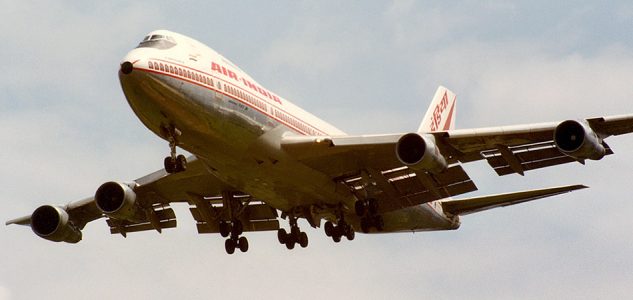New book means Air India bombing will be more than just ‘barely remembered’

BY Wade Hemsworth
June 23, 2017
Chandrima Chakraborty, a McMaster University Scholar who has worked to study, explain and raise awareness of the Air India bombing of June 23, 1985, wonders why Canadians aren’t more aware of Canada’s worst mass murder.
The mid-air bombing killed 329 people, and until the attacks of Sept. 11, 2001, was the most deadly terror incident ever involving an aircraft.
Several years ago, when Chakraborty had tried to look up some academic research on the bombing for a course she was teaching, she was stunned to find there was none to draw upon, and has since worked to fill the gap, including interviewing many victims’ families.
Chakraborty, an Associate Professor of English and Cultural studies, is an editor of the newly published anthology, Remembering Air India: The Art of Public Mourning, together with McMaster colleague Associate Professor Amber Dean (English and Cultural Studies) and Angela Failler of the University of Winnipeg.
The book is a collaborative endeavor with international scholars, creative writers, and visual artists exploring the complex processes of mourning and memorialization that have ensued.
Chakraborty says the goal of the book is to create a new form of public record of what she described as a “barely remembered” event in Canada’s history.
Former Ontario premier Bob Rae, who conducted a review of the events for the federal government and produced the 2005 report, Lessons to Be Learned, reviewed the book for the Literary Review of Canada.
“The focus of this book is not just on a failure of surveillance, policing, intelligence or the court system,” Rae writes. “Its theme is a wider, and painful, reality: the failure to embrace the Air India bombing and its aftermath as our own. Even Canadian scholars—including in the legal community—have failed to study and analyze it as a Canadian event. There are official inquiries but not much history. There are diatribes and conspiracy theories but not enough deep analysis.”
During the 30th anniversary year, Chakraborty led the organization of a two-day conference at McMaster Innovation Park that brought together Air India families, authors and scholars.
The absence of scholarly research on the tragedy, she says, was consistent with the broader and more troubling fact that the Air India bombing has never resonated as deeply with Canadians as the scale of the tragedy would suggest.
The mismatch between the scale of the tragedy and its representation in the public memory may have many explanations, Chakraborty says, including racism that marked Indian immigrants as foreigners in the nation.
It could be that the bombing is regarded as an Indian issue, since it was presumed to be motivated by political conflicts rooted there, or as an Irish event, since the plane that had taken off in Canada exploded in Irish airspace.
It may be that since most of the Canadian victims were of Indian ancestry, that their fellow Canadians discounted them as outsiders.
Whatever the reason, says Chakraborty, the tragedy has been rendered a kind of historical orphan, an especially painful outcome for the families of the victims. It’s an error that she and her co-editors are determined to correct by broadening Canadians’ sense of shared inheritance of the bombing and its aftermath.

